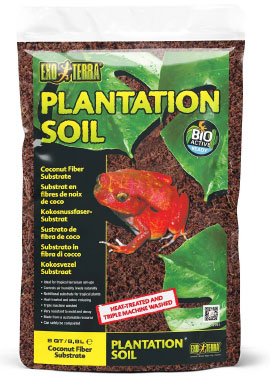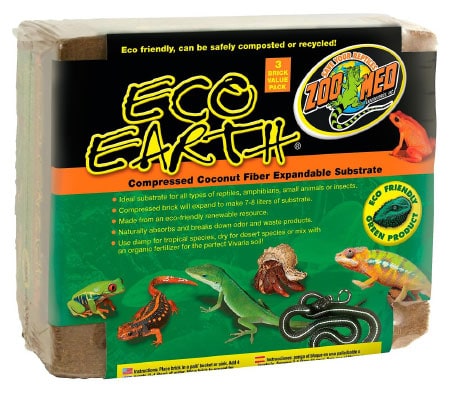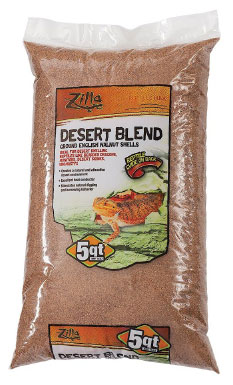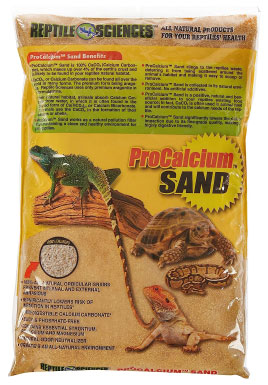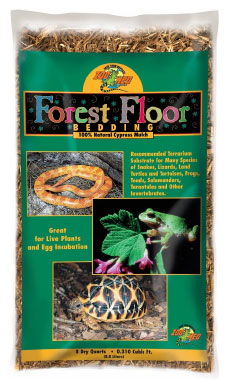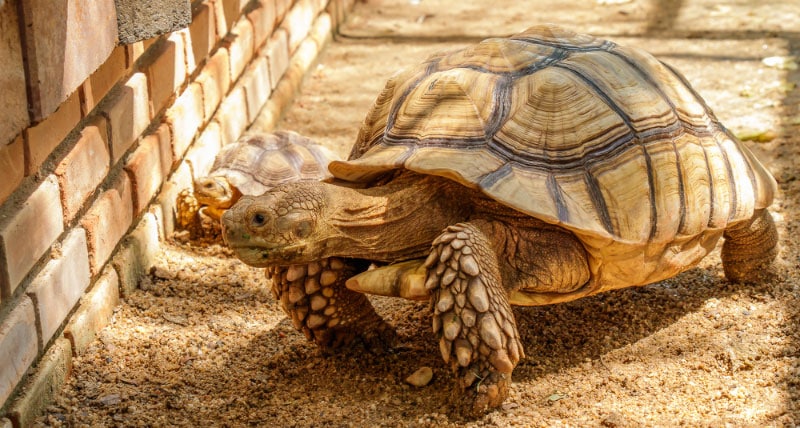
Sulcata Tortoises enjoy digging and burrowing, and they will need a sturdy underground fence when they live outdoors. They also prefer the humidity level to be around 40%–60%, which means you’ll need a substrate that helps you meet these specific needs.
Below we’ve rounded up the five best substrates for your Sulcata Tortoise, with handy reviews to show you exactly what each has to offer. So, let’s get started!
Click to Skip Ahead
A Glance at Our Top Picks (2024 Update)
| Image | Product | Details | ||
|---|---|---|---|---|
| Best Overall |

|
Exo Terra Plantation Soil Substrate |
|
Check Price |
| Best Value |

|
Zoo Med Eco Earth Compressed Substrate |
|
Check Price |
| Premium Choice |

|
Zilla Ground English Walnut Shell Bedding |
|
Check Price |

|
Reptile Sciences Terrarium Sand |
|
Check Price | |

|
Zoo Med Forest Floor Cypress Mulch Bedding |
|
Check Price |
The 5 Best Substrates for Sulcata Tortoises
1. Exo Terra Plantation Soil Tropical Terrarium Reptile Substrate – Best Overall
| Type: | Soil |
| Material: | Coconut fiber |
| Volume: | 7.2 qt |
The Exo Terra Plantation Soil Tropical Terrarium Reptile Substrate is our pick for best overall substrate for Sulcata Tortoises for two main reasons; first, it’s designed specifically with holding moisture in mind, and Sulcata Tortoises enjoy a habitat with high humidity. Secondly, it stimulates your tortoise’s natural digging and burrowing behavior, and Sulcata Tortoises love to dig and are pretty good at it.
This natural substrate made from coconut husk fibers creates the perfect environment for live plants. It absorbs waste, but of course, you must do some spot-cleaning. Additionally, Exo Terra is suitable for use as an incubator medium for eggs. On the whole, customers were pleased with it, but they mentioned that it becomes powdery if you fail to keep it moist enough. There is also a risk of mites and bacterial growth.
2. Zoo Med Eco Earth Compressed Coconut Fiber Expandable Reptile Substrate – Best Value
| Type: | Coconut husk |
| Material: | Coconut fiber |
| Volume: | 3 x 7-8 liters |
The Zoo Med Eco Earth Compressed Coconut Fiber Expandable Reptile Substrate is the best substrate for Sulcata Tortoises for the money. It’s completely natural and eco-friendly. It maintains a humid environment, holds moisture, and is perfect for burrowing and digging. It’s available in brick form or loose.
However, if you get it as a brick, you must break it up and add a little water to soften it before putting it down. Daily misting should create the perfect humid environment for your tortoise. There is less of a risk of mold with Zoo Med than with other options. It’s important to note that it has a risk of impaction if your tortoise eats too much.
3. Zilla Ground English Walnut Shell Reptile Bedding – Premium Choice
| Type: | Walnut Shell |
| Material: | Walnut |
| Volume: | 5–qt |
Zilla Ground English Walnut Shell Reptile Bedding is all-natural. It is generally used as a replacement for sand, and it promises to pass through your tortoise if eaten accidentally. It’s perfect for digging and burrowing and conducts heat well.
It is one of the more expensive options, and you will need to lay down around 1 to 2 inches at the bottom of your terrarium. Some owners mentioned that problems could be caused if it gets into your tortoise’s eyes, so check for sharp bits when laying it out.
4. Reptile Sciences Terrarium Sand
| Type: | Sand |
| Material: | Calcium carbonate |
| Volume: | 10lb |
Sand is usually a terrible option for a tortoise, but Reptile Sciences Terrarium Sand is a safe alternative. The brand has made some changes so its sand is safe for digestion. It is 100% natural orbicular coarse-grain sand and is silica and phosphate-free.
Reptile Sciences’ sand is odorless and denser than silica sand, so your Sulcata Tortoise’s enclosure will look cleaner for longer. Overall, customers seemed happy with this product, but some were disappointed with the lack of absorption; when their tortoise urinated, the pee failed to soak up immediately, meaning clumps of sand stuck to their legs if they walked over it.
5. Zoo Med Forest Floor Natural Cypress Mulch Reptile Bedding
| Type: | Cypress |
| Material: | Cypress mulch |
| Volume: | 8–qt |
Zoo Med Forest Floor Natural Cypress Mulch Reptile Bedding closely mimics a forest floor; it is 100% natural and made from cypress mulch. It is so soft and loose that it will allow your tortoise to dig and burrow. It also hasn’t been heat-treated, which sterilizes it, but it can still retain moisture.
You will need to watch out for sharp pieces when you’re laying the bedding down. Because it is so good at retaining moisture, it is slightly trickier to keep clean. However, it is reasonably priced, so you won’t break the bank by replacing it.
Buyer’s Guide: Choosing the Best Substrates for Sulcata Tortoises
Substrates and Problems They Pose
When buying substrates, it’s important to know what to avoid. This might feel like it drastically narrows down your options, but it will also give you the information you need to keep your tortoise safe. So, let’s look at the problems some substrates can cause your Sulcata Tortoise.
Wood Chips
Your tortoise can get hurt by wood chips since they splinter easily, causing damage to their feet and belly. Additionally, this means that if they eat it accidentally, it can cause internal damage. So, while wood chips look natural and have a wonderful natural smell, many owners avoid them.
Pine and Cedar
Pine and Cedar should never be used since they are highly toxic to Sulcata Tortoises. So, not only can ingestion lead to an impaction, but it can also be fatal.
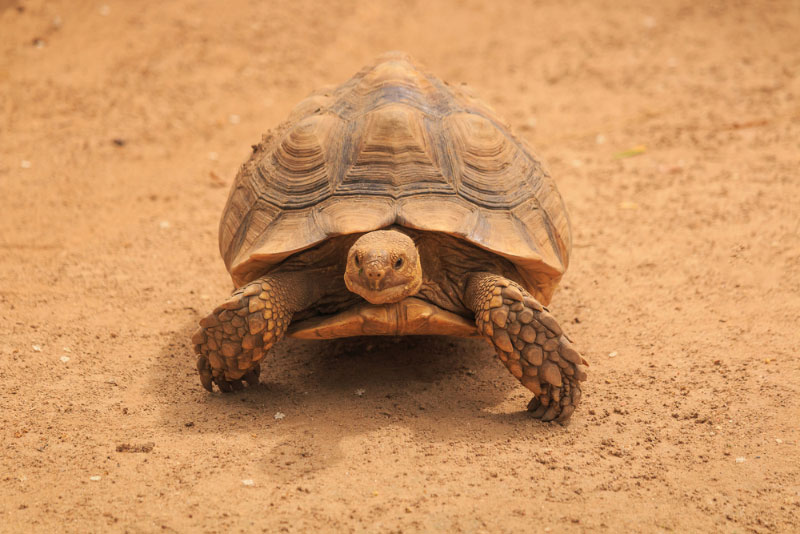
Sand
Sand poses a risk if too much is eaten as it is difficult to digest, which means it sits at the bottom of your tortoise’s gut and causes gastrointestinal problems. It can also easily get into your tortoise’s eyes, causing irritation and infection.
Another problem with sand is that it is particularly fine, so when your tortoise attempts to dig, it will just fall back into place.
Paper
Paper might seem like a suitable substrate, but unfortunately, it gets sticky easily, which creates a big mess. It also doesn’t allow your Sulcata Tortoise to dig or burrow, so it just isn’t a good option.
Soil
Soil can closely mimic your tortoise’s natural terrain and allows easy digging and burrowing. It also retains its shape when your tortoise moves it. If you pick sterilized soil, it has been heat-treated, so it should eliminate mites or other infestations that could cause you problems.
Soil is a messy option, especially when it’s wet, and it can also be challenging to spot tortoise feces amongst the clumps.
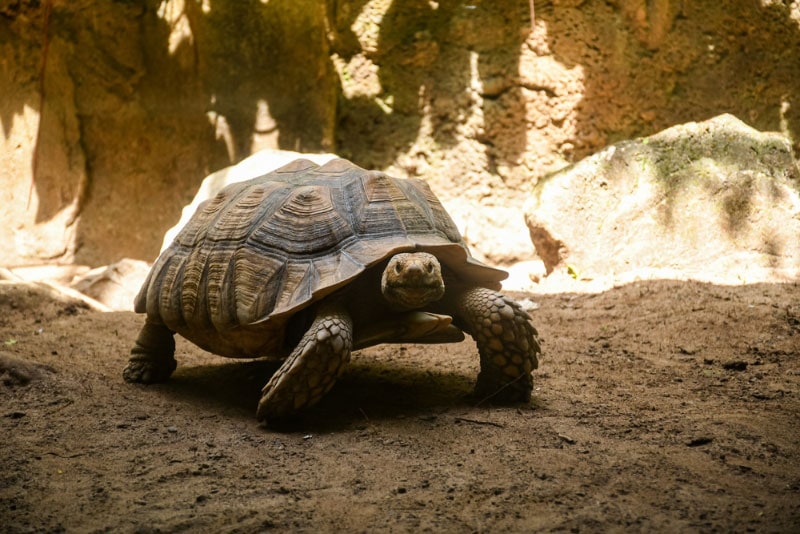
Mulch
Mulch is a common substrate, especially those made from Fir or Cypress, and they are generally safe options. They retain water, offer the opportunity to burrow, and are usually easy enough to maintain. However, you should avoid mulch with additives, preservatives, or chemicals, as they can negatively affect your tortoise’s health.
Carpets
Carpets generally come in rolls or sheets and are simple to install. They are used to mimic the forest, soil, or sand floors and can be washed several times before they have to be thrown away. However, the material is known to snag, can be more challenging to keep clean, and doesn’t offer the opportunity to burrow or dig. Maintaining the required moisture and humidity levels with a carpet is also difficult.
Alfalfa
Alfalfa is an unsuitable option for tortoises because it cannot hold water, so using it as a bottom layer can cause your Sulcata Tortoise to become dehydrated. It’s also been suggested that if your tortoise ingests too much alfalfa, it can lead to stone formation and bladder issues.
How to Pick a Suitable Substrate
There are four main factors to consider when picking the right substrate.
1. Non-Toxic
Sulcata Tortoises tend to eat their substrate accidentally. Eating an inedible substrate can lead to impaction and the risk of choking. It could even be toxic to them and cause severe health problems. So, it’s incredibly important to check the labels of everything you’re buying to ensure you get a safe, non-toxic substrate.
2. Water Retention Capability
Your Sulcata Tortoise requires a certain humidity level in their habitat, and without enough moisture, they can become dehydrated or suffer from flaky skin. So, it’s important that the substrate can hold moisture for as long as possible.
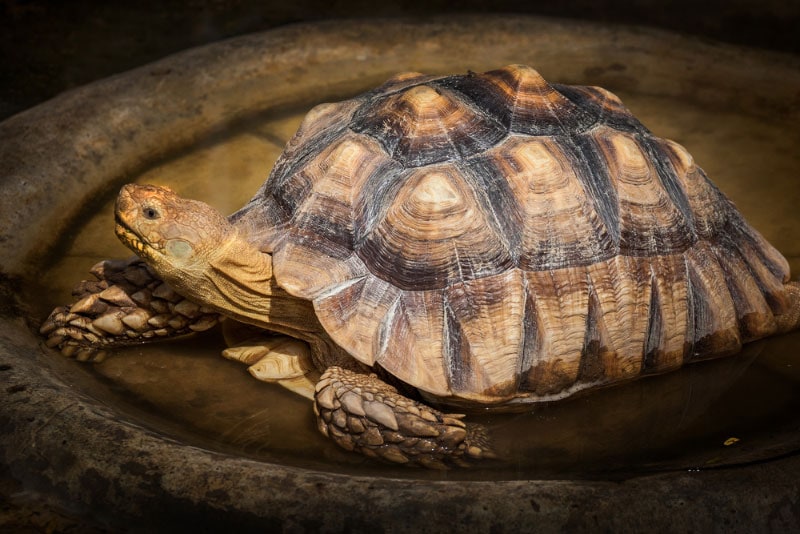
3. Suitable for Digging and Burrowing
It will stress out your Sulcata Tortoise if they cannot give in to their natural burrowing instinct. It’s best to select an appropriate substrate that will allow them to burrow.
4. Ease of Maintenance and Use
It’s best to buy a substrate without many complex steps to set it up or keep it clean. This will save you time in the long run, and your tortoise won’t dread cleaning day!
How Much Substrate Do You Need?
You have to provide enough substrate for your tortoise to dig and burrow, which usually means you need at least two inches down. This doesn’t need to be throughout the whole terrarium. Instead, you can provide a digging area in a corner or designated space. The substrate must cover the entire floor, but an inch should be suitable for the rest of the tank.
How Often Should Substrate Be Changed?
There is no definitive answer when it comes to this question because many factors will affect how often you need to change the substrate. The humidity and temperature of the tank, how messy your tortoise is, and what they eat and where they feed will all factor in. In general, you’ll probably be looking at changing loose substrate every 2 to 3 weeks.
If you use a substrate that can be washed and replaced, you might get two rotations out of it, but you will need to add a clean substrate to the tank while the other is being washed and dried out.
Conclusion
We found that the Exo Terra Plantation Soil Tropical Terrarium Reptile Substrate was the best overall option. It’s an all-natural material, supports live plant growth, and promotes burrowing and digging behavior. Zoo Med Eco Earth Compressed Coconut Fiber Expandable Reptile Substrate is a good alternative when you’re on a budget and is eco-friendly.
Your Sulcata Tortoise needs a healthy, clean environment to thrive, and the substrate you pick will make a big difference in the quality of this environment. The substrate affects the levels of moisture, humidity, and happiness of your tortoise. We hope our reviews have helped you narrow down your choices and that you’re leaving us today with a little more knowledge about what to look for in a substrate.
Featured Image Credit: legography, Shutterstock





